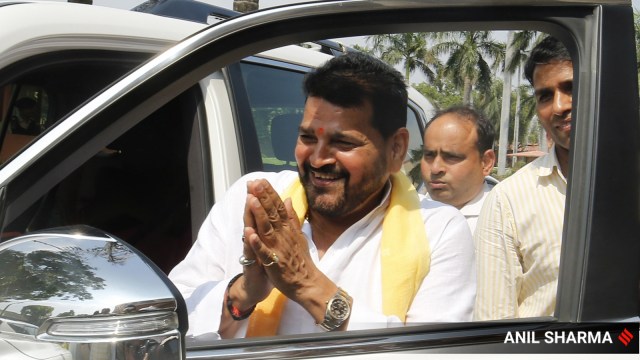
“The daughters of the country have lost. Brij Bhushan Singh has won,” India’s first and only Olympic women wrestling medallist Sakshi Malik lamented last week in a post on the microblogging site, X. Singh has not been renominated for the Kaiserganj seat by the BJP, the party the former Wrestling Federation supremo has represented 5 out of the 6 times he has been elected to the Lok Sabha. That, however, is only a half-hearted nod to the more than a year-long protest by some of the country’s top wrestlers including Mallik. The BJP has saved itself the embarrassment of fielding a candidate who faces serious allegations of sexual harassment by replacing the father with the son. Children should, of course, not bear their parent’s cross. It’s also possible that Karan Bhushan Singh is much more than a Bahubali’s son. Yet, it’s difficult to not agree with Malik, not just because the father celebrated his son’s candidature with a massive show of strength. The champion wrestler’s lament is especially salient because it speaks to a political culture that condones the brushing aside of issues related to women’s dignity for the sake of electoral calculations.
As this paper’s editorial (Moral failure, IE, May 4) pointed out, “the substitution of Brij Bhushan with his son comes as mere tokenism…Given the Centre’s focus on women-led development, its pronounced antipathy towards parivarwad and the Prime Minister’s repeated emphasis on nari shakti, this is particularly ironic”. The BJP’s moral failing is of the piece with that of its ally in Karnataka that chose to renominate its Hassan MP, Prajwal Revanna, despite knowing full well the several allegations of depravity against him. Incidentally, it was the Hassan MP’s grandfather, JD(S) Supremo and then PM, H D Deve Gowda who placed the Women’s Reservation Bill in Parliament in 1996 – it couldn’t be passed.
The more things change
A little more than six months ago, the Lok Sabha passed the Women’s Reservation Bill by a resounding majority of 452. It’s still time before women get the 33 per cent representation guaranteed to them by the Nari Shakti Vandan Adhiniyam, 2023. In more ways than one, it seems that having passed the landmark legislation parties seem to have gone back to old ways.
If the data generated by the Association for Democratic Reforms is any indication, women represented about 8-9 per cent of the candidates in the first three phases of the Lok Sabha polls. The non-profit’s figures show that the percentage of women candidates will go up marginally to about 10 per cent in the fourth phase of the polls.
Compare this with the data for candidates with criminal records who are in the fray for the fourth phase – more than a fifth, double the percentage of women candidates. Sixteen per cent have serious criminal charges against them. ADR’s data shows that 50 candidates to seats going to the polls this weak have been accused of crimes against women, including five facing rape allegations.
The winnability myth
The electoral landscape also presents a curious paradox. The critical role of women voters is now acknowledged across the political spectrum. Yet, the list of candidates of almost all parties – to an extent, the TMC and BJD have shown an inclination to buck the trend – indicates that they believe that men are best placed to win, even if that means overlooking the charges against the likes of Prajwal Revanna till they become public. At such times, it’s more a question of saving face, which leads to questionable decisions like replacing Brij Bhushan Sharan Singh with his son.
A combination of inertia and patriarchal mindsets has made winnability criteria the number one stonewall of parties. Criticism of the alibi has largely remained within academic circles. What other than a lack of will can explain the failure of the political class to look at the writing on the wall, which is even reflected in data.
Take the last four Lok Sabha elections. Women candidates constituted 6.5 per cent of those in the fray in 2004, 7 per cent in 2009, 8.1 per cent in 2014 and nearly 9 per cent in 2019. Compare that to how many actually made it to the Lok Sabha: Eight per cent in 2004, 11 per cent in 2009, around 12 per cent in 2014 and close to 15 per cent in 2019. In other words, the success rate of women exceeds their painfully incremental presence in the list of candidates.
It’s time that parties take a closer look at such figures – much like caste and religion arithmetic — when they defer to the likes of Brij Bhushan Sharan Singh.
Till next time
Kaushik


